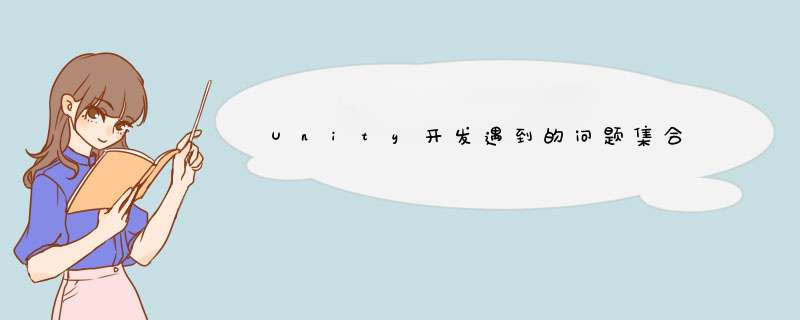
1. Unity打包安卓帧率受限
Unity打包安卓之后默认是最高30帧,这是Unity官方对于帧率限制的说明:Application.targetFrameRate
里面提到,对于安卓而言,需要设置两个地方:1)QualitySettings.vSyncCount;2)targetFrameRate;
QualitySettings.vSyncCount
打开Buile Settings —> Player Settings —> Quality —> VSync count 设为Don’t Sync
targetFrameRate
在项目Start()中添加Application.targetFrameRate = 60;将帧率设置为60,如果由于机器无法达到60的帧率,那将会以最大的帧率运行。若设置为-1,将按照平台默认的帧率运行。
Asset Store搜索“Android Native Audio”。
添加进项目工程里面后,可以看到里面有两个PDF,这就是使用教程了:
在此拿ANA Music 说明,可以看到里面对于使用方法都说得很清楚了。
ANA Music 的生命周期:
ANA Music 的用例:
使用方法非常简单啊,只需要先获取音乐的musicID,然后通过调用ANAMusic.play() 函数就可以实现音乐播放了。
游戏初始化:
/*===== 游戏音乐 =====*/
this.musicBlocks = FadedMusic.data.blocks; //方块数据
this.totalBlocks = this.musicBlocks.Length; //数据量大小
#if UNITY_ANDROID && !UNITY_EDITOR
this.musicID = ANAMusic.load("car.ogg");
#else
this.music = this.gameObject.AddComponent<AudioSource>();
this.music.clip = ResMgr.Instance.GetAssetCache<AudioClip>(FadedMusic.soundUrl); //获取音乐资源
#endif
/*===== 开始游戏 =====*/
this.gameStart();
开始播放音乐:
/* 开始游戏 */
private void gameStart() {
#if UNITY_ANDROID && !UNITY_EDITOR
ANAMusic.play(this.musicID);
#else
this.music.Play(); //播放音乐
#endif
this.musicStartTime = Time.time; //记录游戏开始的时间戳
this.FPS_time = Time.time;
}
在此我将环境分为安卓平台和其他平台两种,如果当前是安卓环境,则使用ANAMusic.play() 播放音乐,不然则使用AudioSource 进行播放。
我们需要实现Unity调用手机BLE与蓝牙模块进行连接通讯,Asset Store 搜索“Arduino Bluetooth Plugin”并下载,或者在这个链接进行下载:【Unity安卓蓝牙插件】
将该插件导入项目中,这个Arduino Unity Plugin 文件就是使用文档
文档里面对于插件的使用做了较为详细的说明:
首先就是需要进行一些配置,然后需要将插件中的Plugins 文件夹移到与BluetoothAPI 同级位置。
(如果平台是PC或者IOS等,文档中有更加详细的 *** 作指示)
建立连接:
在这张图中对于如何建立蓝牙连接都给了较为详细的步骤,并且在Scripts/manager.cs 中有详细的用例:
void Start () {
deviceName = "HC-05"; //bluetooth should be turned ON;
try{
bluetoothHelper = BluetoothHelper.GetInstance(deviceName);
bluetoothHelper.OnConnected += OnConnected;
bluetoothHelper.OnConnectionFailed += OnConnectionFailed;
bluetoothHelper.OnDataReceived += OnMessageReceived; //read the data
bluetoothHelper.setTerminatorBasedStream("\n"); //delimits received messages based on \n char
LinkedList<BluetoothDevice> ds = bluetoothHelper.getPairedDevicesList();
foreach(BluetoothDevice d in ds)
Debug.Log($"{d.DeviceName} {d.DeviceAddress}");
}
catch (Exception ex){
sphere.GetComponent<Renderer>().material.color = Color.yellow;
Debug.Log (ex.Message);
text.text = ex.Message;
}
}
"HC-05",然后通过这个名称获取instance;接着添加了一系列的事件(cs文件中有定义);打印手机已经配对过的设备(注意:如果想要连接一个蓝牙模块,需要先与其配对,所以对于那些无法配对的蓝牙模块,就不适合与手机进行连接);
void OnGUI()
{
if(bluetoothHelper!=null)
bluetoothHelper.DrawGUI();
else
return;
if(!bluetoothHelper.isConnected())
if(GUI.Button(new Rect(Screen.width/2-Screen.width/10, Screen.height/10, Screen.width/5, Screen.height/10), "Connect"))
{
if(bluetoothHelper.isDevicePaired())
bluetoothHelper.Connect (); // tries to connect
else
sphere.GetComponent<Renderer>().material.color = Color.magenta;
}
}
这也是Scripts/manager.cs 中的代码,绘制一个按键用以对前面定义的bluetoothHelper 进行连接。
首先导入fbx 动画模型的资源:
然后可以将动画模型的资源移动到项目中的Resources 文件夹中,该文件夹中的资源可以直接在代码中获取,非常方便。
可以看到,这个动画模型有四个动画,分别为idle、left_hook、left_straight、left_swing(动画帧数、增添和删减可以在右侧Inspector 边栏中进行 *** 作)。
然后在代码中对Resources 文件夹中的资源进行获取并播放动画:
void Start(){
var obj_fist = Resources.Load("fist"); //获取拳套资源
this.fist = Instantiate(obj_fist) as GameObject; //实例化对象
this.fist.name = obj_fist.name;
this.fist.AddComponent<Punch>(); //链接脚本
}
void OnGUI(){
/* 绘制拳击按键 */
if(GUI.Button(new Rect(Screen.width/2+Screen.width/10*3, Screen.height/5, Screen.width/5, Screen.height/10), "LS")){
Punch.LeftStraight();
}
if(GUI.Button(new Rect(Screen.width/2+Screen.width/10*3, Screen.height/10*3, Screen.width/5, Screen.height/10), "LW")){
Punch.LeftSwing();
}
if(GUI.Button(new Rect(Screen.width/2+Screen.width/10*3, Screen.height/5*2, Screen.width/5, Screen.height/10), "LH")){
Punch.LeftHook();
}
在Punch.cs 中定义动画播放的方法:
private static new Animation animation;
void Start(){
animation = GetComponent<Animation>();
}
}
public static void LeftStraight(){
animation.Play("left_straight");
}
public static void LeftSwing(){
animation.Play("left_swing");
}
public static void LeftHook(){
animation.Play("left_hook");
}
该部分代码参考《Unity 3D游戏开发(第2版)》P393 场景管理
Unity提供同步切换和异步切换:
//同步切换场景
SceneManager.LoadScene("sceneName");
//异步切换场景
SceneManager.LoadSceneAsync("sceneName");
首先创建一个cs文件SceneLoadManager.cs,并键入以下代码:
using System.Collections;
using System.Collections.Generic;
using UnityEngine;
using UnityEngine.Events;
using UnityEngine.SceneManagement;
public class SceneLoadManager : MonoBehaviour
{
static AsyncOperation m_AsyncOperation;
static UnityAction<float> m_Progress;
//加载场景
//name 场景名,progress回调加载进度,finish 回调加载场景结束
static public void LoadScene(string name, UnityAction<float>progress, UnityAction finish){
new GameObject("#SceneLoadManager#").AddComponent<SceneLoadManager>();
m_AsyncOperation = SceneManager.LoadSceneAsync(name, LoadSceneMode.Single);
m_Progress = progress;
//加载完毕后抛出事件
m_AsyncOperation.completed += delegate(AsyncOperation obj){
finish();
m_AsyncOperation = null;
};
}
// Update is called once per frame
void Update()
{
if(m_AsyncOperation != null){
//抛出加载进度
if(m_Progress != null){
m_Progress(m_AsyncOperation.progress);
m_Progress = null;
}
}
}
}
上述代码最后需要监听加载进度,并在加载结束的地方进行调用。拿到加载进度,就可以在UI 上个显示。
然后创建一个新的场景New Scene:
然后点击File > Build Settings…
接着点击Add Open Scenes(注意:此动作需要在打开新场景New Scene 的前提下进行)
就可以看到当前的New Scene 添加进来了
切换新场景会自动卸载老场景,如果需要在跳转场景时禁止卸载初始化的游戏对象,可以在需要进行跳转的cs 文件中键入以下代码:
(需要using UnityEngine.SceneManagement;)
void Start(){
//禁止切换场景时卸载初始化的游戏对象
GameObject[]InitGameObjects = GameObject.FindObjectsOfType<GameObject>();
foreach(GameObject go in InitGameObjects){
if(go.transform.parent == null)
GameObject.DontDestroyOnLoad(go.transform.root);
}
}
跳转场景:
//加载场景
SceneLoadManager.LoadScene("New Scene", delegate(float progress){
Debug.LogFormat("加载进度:{0}", progress);
}, delegate(){
Debug.Log("加载结束");
});
首先在Canvas 中创建Button
然后创建一个StartScene.cs 文件
using System.Collections;
using System.Collections.Generic;
using UnityEngine;
using UnityEngine.UI;
using UnityEngine.EventSystems;
public class StartScene : MonoBehaviour
{
public Button button_start;
public Button button_setting;
public Button button_quit;
// Start is called before the first frame update
void Awake() {
button_start.onClick.AddListener(delegate(){
OnClick(button_start.gameObject);
});
button_setting.onClick.AddListener(delegate(){
OnClick(button_setting.gameObject);
});
button_quit.onClick.AddListener(delegate(){
OnClick(button_quit.gameObject);
});
}
// Update is called once per frame
void OnClick(GameObject go)
{
if(go == button_start.gameObject) {
Debug.Log("button_start");
} else if(go == button_setting.gameObject) {
Debug.Log("button_setting");
} else if(go == button_quit.gameObject) {
Debug.Log("button_quit");
GetExit();
}
}
public void GetExit()//退出运行
{
#if UNITY_EDITOR
UnityEditor.EditorApplication.isPlaying = false;//用于退出运行
#else
Application.Quit();
#endif
}
}
然后在Canvas 中创建一个空物体,命名为UIManager:
为该物体附上StartScene.cs文件,并将文件中定义的三个Button button_start、button_setting、button_quit分别绑定三个按键:
如此便OK了,点击三个按键都会触发OnClick(),并在函数中对具体的触发按键进行不同的相应
欢迎分享,转载请注明来源:内存溢出

 微信扫一扫
微信扫一扫
 支付宝扫一扫
支付宝扫一扫
评论列表(0条)